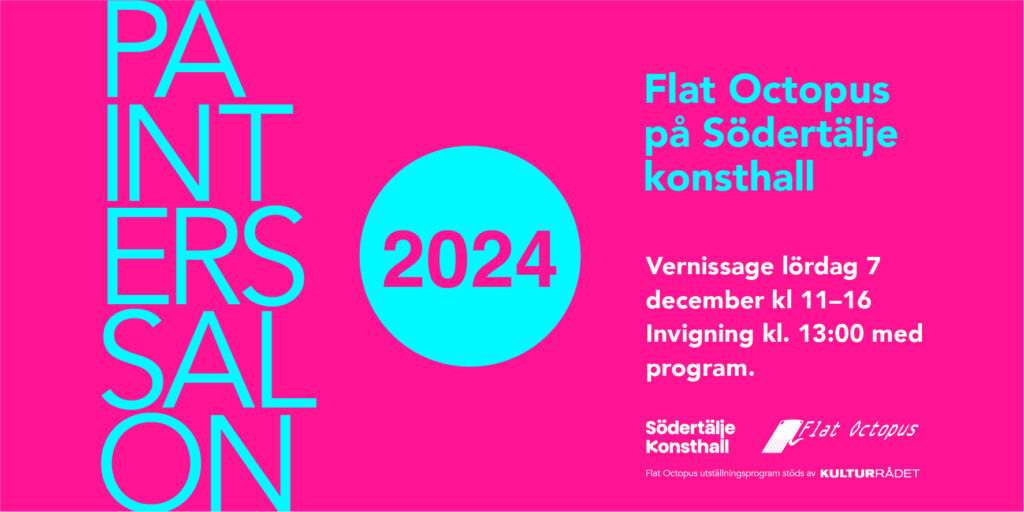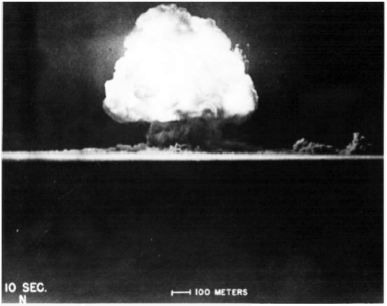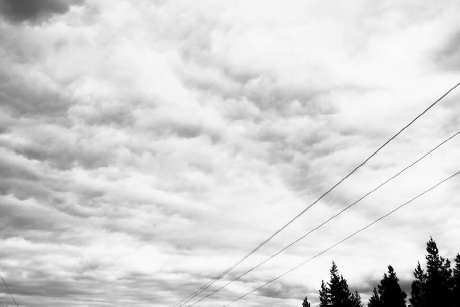


About The Ultimate Limits of Infinity and the Space Beyond
– descriptions and speculations
The Ultimate Limits of Infinity and the Space Beyond is a traveling exhibition by and with four artists, Andreas Sandström & Grant Watkins, Debora Elgeholm, Lina Persson and Niklas Wallenborg. The project’s title and theme are taken from science och ction and its way of examining the essence and conditions of reality, usually in the form of literature and film. Organizationally, this is a project without either a producer or a curator, instead the artists have divided the responsibility for production between themselves in everything from budget work to contact with art galleries and galleries. The Ultimate Limits of Infinity and the Space Beyond thus have an artist-driven form of organization that has become increasingly unusual in an art world where the normative notion of what is professional is taken from the cultural industries’ organizational forms.
The first part of the exhibition was at Gallery 54 in Gothenburg and then went on to Nacka Konsthall. After that, a new version was presented at Södertälje konsthall, and finally it will be shown at Visby Art Museum. But how did it really start?
The seeds of The Ultimate Limits of Infinity and the Space Beyond arose from a deficiency. The artists Niklas Wallenborg and Andreas Sandström lacked a context and a platform to work on. At the same time, they shared an interest in Science fiction and how it could be used in contemporary art. They consulted with artist colleagues with related interests, and so the project was underway. This is how Wallenborg describes the origins of the project, he likes the organic and changing in this way of working, how the exhibitions adapt to the place and works are removed, added or changed to work together. They have tried to divide the purely practical work as best they can. Another of the participating artists, Lina Persson, emphasizes that everyone in the group has small children and it has been a bit of a puzzle to have time to see everyone together. She believes that precisely in view of this, it is especially fun to do a traveling exhibition, and it was only when they put together the exhibition at Gallery 54 in Gothenburg that they really had time to see each other’s work and a dialogue arose between those developed during the project. Spending time together in the car to Gothenburg, installing and building gave energy and input to do the next exhibition together. The artist Debora Elgeholm points out that it has been interesting to be confronted with different relations to artistic practice in general and to the exhibition’s themes in particular. Although they work with different materials – video, objects or text – during the journey they have found many points of contact. In my dialogue with the artists, it simply becomes clear that the collective work in particular must be seen as a crucial part of the project’s investigative and trying nature.
To further add context and complexity, the artists invited Kira Carpelan, Lina Johansson, Robert Stasinski and me, Fredrik Svensk to write about the project and its themes in this publication. While Stasinski addresses the issue of art and science at a time when the imaginary has become a hard currency for both science and capital, Johansson assumes a historical review of science and its contact with feminist political developments, all while Carpelan, with help of among other things, Afro-futurism and globalization theory discuss the possibility of an ethical-political dreaming in a genre whose imperialist roots cannot be denied. In addition to these writers, this publication also reflects the different ways in which artists themselves use a science fiction-inspired world of thought, design language and history to comment on, feel and look at, and influence their surroundings. The artists’ own contributions in this publication are therefore not made on the basis of a common yardstick. But what kind of art are we dealing with?
For the artist Lina Persson, the future is a territory that science fiction is taking over power. The future is for her the name of a “terra nullius” that we humans colonize without necessarily knowing or understanding the life forms that may already live there. This is the assumption for her previous work Tempus Nullius (2012-ongoing) where Persson gives representatives from the future a chance to present their case in the negotiation of temporal resources. Based on Ron Mallet’s theory of the time machine, this is theoretically possible. In an interview with Mallet, Persson stages this hypothetical possibility. If today’s media society has turned the desire to tell its own story into a demand for narcissism, which is perhaps mainly visible in the preoccupation with social media and in seeing everything you do as part of a business plan, we could say that Persson turns this desire inside out and directs it towards the image of the future, rather than the struggle for history. Based on Afrofuturism and feminist science fiction, Persson’s work Animated Ecology (2016) can be seen as an attempt to listen to and collaborate with things whose voice Persson normally neither hears nor understands. A work that examines the possibility of establishing new types of ethical relations when the demarcations that were normalized by colonial modernity were relaxed. Something that Persson shares with other artists in the exhibition is that art seems to be less about “expressing oneself”, than processing and changing our common reality.
For Niklas Wallenborg, science fiction is a creation and investigation of alternative realities and he often works with the transformation of images and texts through various media. In his installation Sci-Fi a Family Dinner (Tell them to meet me at the Mountain / And it sang for us.) (2016), “screengrabs” from ET, Alien are combined with Close Encounter of the third kind in a series montage presented as a unrolled analogue roll. The cut-out still images are from scenes from the films where neither human nor extraterrestrial life is visible. Wallenborg has since taken the dialogue from the films’ dinner scenes and put them together into a handwritten dialogue that will work as a kind of subtext. By overlapping different scenographies without any kind of life, with conversations from meals, Wallenborg’s work opens up new emotional relationships and thoughts about both what a dinner and a landscape without life can actually mean, maybe something new, exciting, that can change everything.
Here, as in many other works, Wallenborg’s montage method consists of copying, translating, sampling and recreating where science functions as a material. Rather than creating art based on, for example, an art historical ism, a journalistic convention, or a scientific assumption, Wallenborg uses what he calls “the inherent qualities, emotions and history that exist in our common collective consciousness” as it is represented in science fiction. He can be said to make artistic use of and contemplate how in the darkest dystopias there is a forward-thinking, a grain of hope. Something that cuts right into our time of crises and authoritarian populism.
In her works, Debora Elgeholm has worked with the relationship between an apocalyptic thinking within the free churches that arose during the 1950s, at the same time as interest in UFOs and other supernatural things accelerated in the West. Above all, she has dealt with the question of how myths arise and are cultivated and how events in society affect the ways in which different religious groups hold together. In the book installation Ovan þar (2017), Elgeholm mixes books about Jesus’ return with books about Ufon’s visit to earth. And in previous works such as Inner Surveillance (2015), Me Myself and Monitor (2015) and It All Started Here (2014), she examines the connection between science fiction films and beliefs in Scientology with a focus on the paranoid fear that Science fiction author and founder of Scientology L.Ron Hubbard bases his entire belief system on. To that extent, Elgeholm uses the time of the Cold War, full of Russian terror, star wars and decolonization to reflect our time.
In the film The Horizon of Events (2013), she starts from different passages in Christian books about Jesus’ return from the same time, and in the work Eight Hundred Thousand Light Years From Here (2009), she processes Christian music on the same theme. Rather than exposing the rhetoric behind religious thinking, her work calls for reaction to the reaction as a tool for dealing with an uncertain world full of crises. The Christian imaginary worlds that take shape here are often shaped by natural disasters and unusual signs in the sky, not entirely different from the types of images that are found in science fiction movies where alien creatures approach the earth. In the juxtaposition of these phenomena, not only an opportunity for comparison arises, but a tension that allows one world of images to cross the other. Elgeholm’s works also brings to mind the sphere of economics, and then above all the role of crises in capitalism. The idea of a creative destruction is an example of a term that became popular in neoliberal ideologies as a kind of necessary internal purification process to maintain productivity and efficiency. We find the artistic precursor to this destructivism in futurism and its contemporary variant, accelerationism, both of which welcome some form of obligatory catastrophe. Elgeholm’s art does not do this. Rather than acknowledging the forces of devastation, or reactively dreaming back to an unthreatened or even lost identity, so Elgeholm’s art draws attention to the spiritual forces of the most secular events. Andreas Sandström & Grant Watkins have worked together since 2010 to explore concepts such as nature, atmosphere, time and space. They are interested in the potential of art to create new spaces and an emotional reaction to already known worlds of images. In the installation They’re Already Here (2016), Sandström & Watkins explore the distribution of intelligence between different planets, how it affects our perception of the self and how it manifests itself in human culture. The starting point is the ability of microorganisms to be transported through space, establish themselves here on earth, affect our nervous systems and thereby our consciousness. This artistic method can be understood as a way of both critically making visible how human life is governed not only by being subjected to systems of representation, but also how the forces that make us perceive, feel and think in a certain way also affect us on a preconscious level. This is just one of many examples of how this exhibition project opens up new relationships between what is human and inhuman. In other cases, the works draw nourishment from more subversive parts of the science sphere.
In conclusion, I want to share a speculative perspective on both the themes, organization behind, and the works of art in The Ultimate Limits of Infinity and the Space Beyond that have slowly emerged. If, the hybridization of humans and animals, the organism and the machine of our time, the physical and the immaterial, has marginalized the idea of a free human individuality. Then The Ultimate Limits of Infinity and the Space Beyond can be understood as an invitation to use the physical and imaginary spaces of art to feel and think in new ways around our location in space right now. The consequence of this is that this project can neither reduced to being science fiction, or in a simple way can be said to be about science fiction. If we assume that the intensification of communication made possible by new digital technologies depends on a desire to actually get closer to each other, to get to know each other, to live and explore the world together, then at the same time the problem is that these new technologies and platforms for communication, exchange and community, programmed on the basis of a private-ownership logic, the largest representatives of which are Google and Facebook. These companies simply live on all the attention we give each other on their platforms, information that is then passed on to anyone who pays the most, and in that sense engage in a kind of colonialism, where we as users act as free labor. In a way, this is a dystopian science fiction myth that has become a reality. A situation where all the infrastructure we have built up, all life and all activity is quantified and sold as products in a market. In other words, if capitalism is the name of the process that enchants everything and transforms qualities into quantities, in a process that has intensified in step with digitalization and computerization, that is, what is sometimes called in computer science, the universal turingmachine (after Alan Turing ), so perhaps our human self-perception is the result of a form of science fiction? 1 A starting point for looking at this exhibition project and its various relations to science fiction is that it reflects, investigates and develops imaginary worlds that rather go beyond this logic, without being able to be reduced to that or other common ways of programming life and its conditions.
Fredrik Svensk
Fredrik Svensk is an art theorist at Valand Academy, University of Gothenburg; editor-in-chief of the magazine Paletten and writes reviews for Artforum, Kunstkritikk and Aftonbladet kultur
Editors and contributing artists:
Andreas Sandström & Grant Watkins, Debora Elgeholm, Lina Persson and Niklas Wallenborg.
Invited writers:
Kira Carpelan, Lina Johansson, Robert Stasinski and Fredrik Svensk.
Exhibition catalogue here (some texts in english)
Double-click to download.

